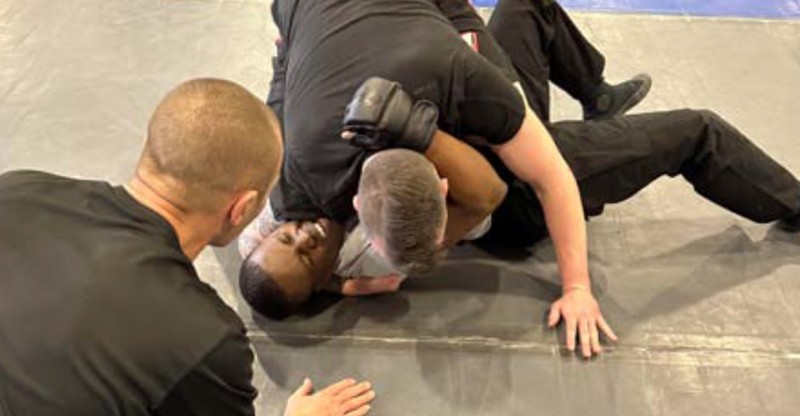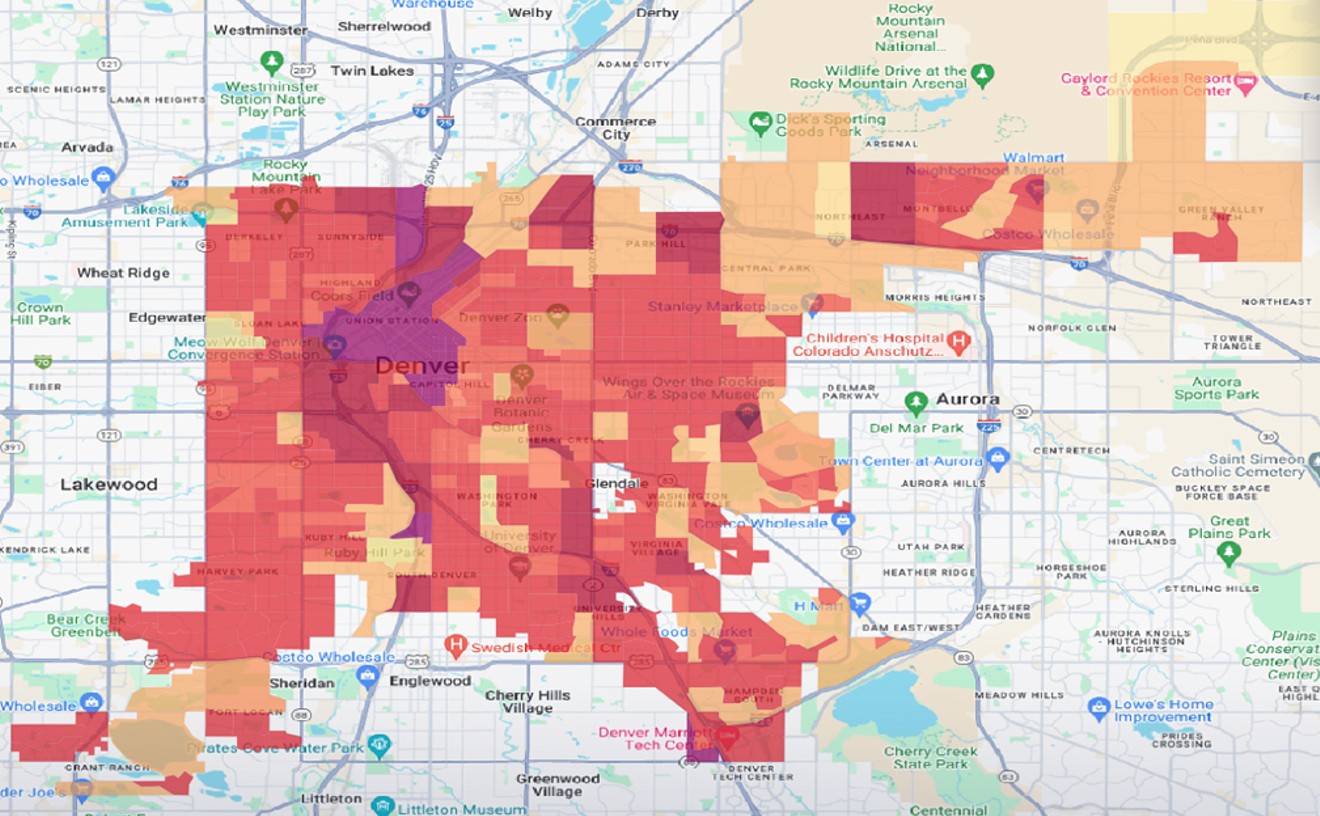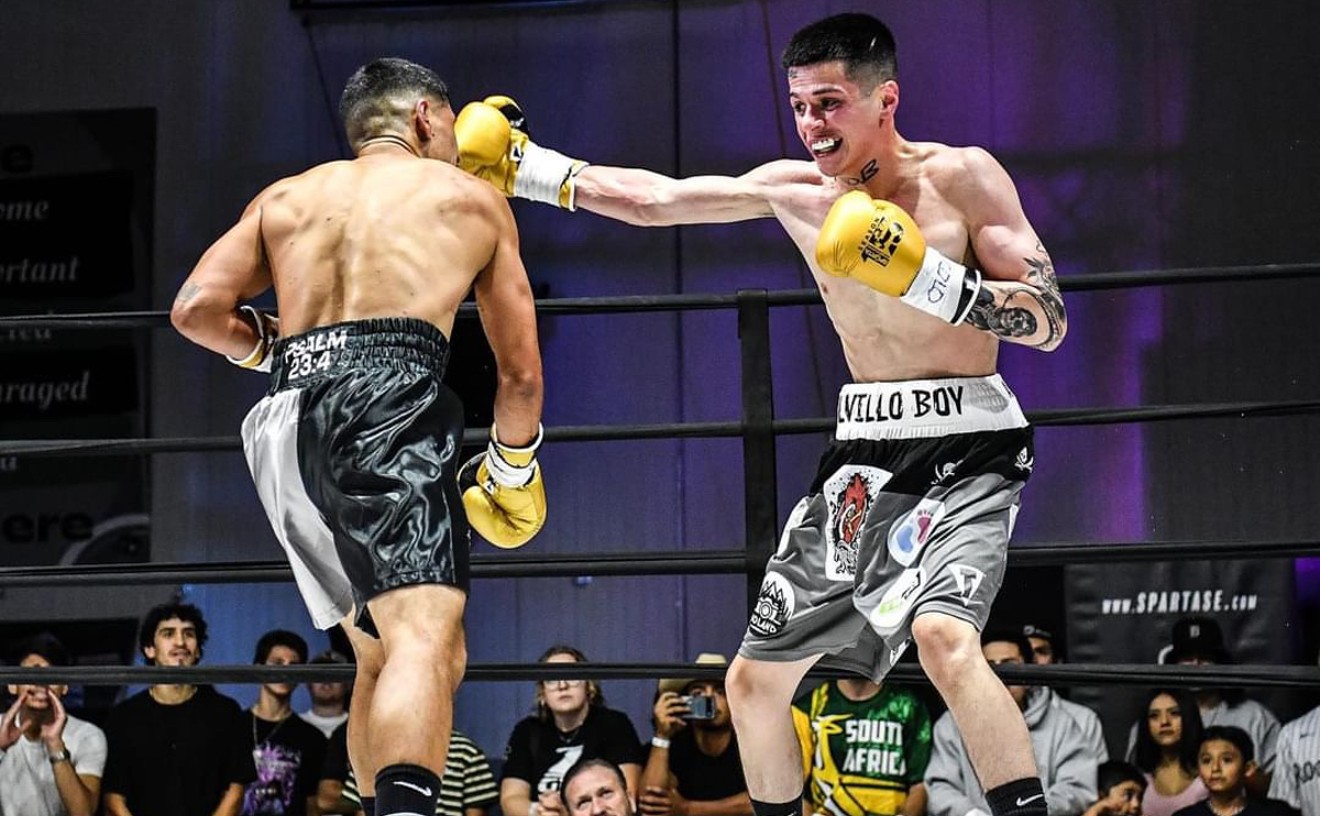At first blush, the story told in the complaint is all too familiar. Moses is Black, and like one in thirteen Black Americans, he was born with the trait for sickle cell disease, a sometimes fatal blood disorder that was set in motion by injuries he suffered at the hands of DPD personnel.
But Moses wasn't a crime suspect. He was a police recruit whose crisis took place during a Dynamic Action Drill, a training exercise dubbed "Fight Day" that every individual hoping to become a DPD law enforcer must pass before being formally invited to join the force. Moreover, Denver Health paramedics were on the scene during the drill, since injuries so often occur; prior to Moses's turn running the gauntlet, which included a face-off with an officer who used to be a prominent mixed martial arts fighter, one of his fellow recruits suffered a broken nose and several others required hospital treatment to address assorted issues. But even though the team charged with his care knew Moses carried the sickle cell trait, they allegedly failed to properly address his condition, thereby making an awful situation infinitely worse.
The complaint quotes Moses at length, speaking in heart-wrenching terms about the ways his world has changed following his violent encounter with DPD officers on January 6, 2023.
"Saying my life has been ruined is a complete understatement," he stresses. "I had everything going for me in life, and it was all taken away. I have had many thoughts of not wanting to live."
Beyond the DPD and Denver Health, the suit names thirteen additional defendants — eleven officers involved in the drill and two paramedics whose accounts of what happened, including assertions that Moses didn't suffer any trauma despite striking his head on the floor and losing consciousness several times, stand in stark contrast to the observations of fellow recruits who witnessed the slow-motion catastrophe and subsequently shared their thoughts on a chat board. One concluded that those running Fight Day "don't give a fuck"; a second argued, "We need to be willing to tell the truth even if DPD tries to cover it up"; and a third chimed in with this: "If they try to say something different, I won't let Moses go out like that. They need to be accountable for their actions."
This opinion is shared by the Denver-based co-counsels representing Moses: Darold Killmer of Killmer, Lane, LLP, and John Holland of Holland, Holland Edwards & Grossman, PC. Both have handled major cases that targeted Denver over brutality accusations against Black men. For example, Killmer oversaw the successful lawsuit filed on behalf of Marvin Booker, who died in custody at the Denver jail in 2010, while Holland worked on behalf of Alex Landau, a college student whose 2009 beating by DPD officers led to a settlement two years later.
Killmer's aims for the latest suit center on compensation for Moses, whose stumps continue to bleed regularly and cause him excruciating pain — but he also wants to see an end to the Dynamic Action Drill, which he calls a "barbaric hazing ritual." Holland, too, thinks the drill is sending the wrong message to those asked to serve the public.
"The two most important principles that Darold and I get to work on in cases with police is brutality and failure to render aid," he says. "You can't use more force than is necessary, and you have to help people you hurt or were injured. But here, the training exercise, which is ostensibly for the purpose of helping recruits learn arrest techniques, de-escalation and providing care to the injured, is turned on its head and pounded into the ground. It teaches that not only is excessive force okay, but you can knock a police officer unconscious and continue to assault them instead of getting them care when they're completely incapacitated."
As for the paramedics, Killmer employs an analogy from professional football, which now uses independent doctors to determine whether ailing athletes should be sidelined because of questions concerning the objectivity of physicians in a franchise's employ.
"You don't want the medical professional becoming part of the team, with the main goal to win the game," Killmer says. "They know that the star player who's injured and shouldn't be playing is still the star player, and they have a better chance of winning if they abdicate their medical training and let him stay in the game." With regard to the Dynamic Action Drill, Killmer speculates that "maybe they're flattered to have been invited onto the law enforcement team. But their goal isn't to protect the recruit. It's to help the recruits complete the exercise so they can become police officers — and they're judged by how much they helped accomplish that."

A photo of Victor Moses, center, after his graduation from Florida State University, and an image of Moses following his double amputation.
Killmer Lane, LLP/Holland, Holland Edwards & Grossman, PC
Risks associated with the sickle cell trait can increase in high-altitude locations such as Denver. But in July 2022, Moses was cleared to take part in training, and he reportedly excelled during his first months at the academy, which included instruction in use-of-force techniques and other intense physical activity.
The Dynamic Action Drill upped this ante by way of a four-part routine that's supposed to last just eight minutes. The complaint describes Station 1 as the "Combatives/Defensive Tactics stage," during which the recruit is ordered to "deliver repeated punches, kicks and knee strikes against either a standup dummy or pads wielded by drill trainers upon command, while simultaneously receiving multiple commands and physical distractions." In Station 2, the "Baton Endurance Drill," the recruit is "given a padded baton and they enter an area where there are four staff members, who each have a large pad. The staff members attack the recruit with 2 foot by 2 foot padded bags, simulating an attack by more than one assaultive subject."
For Station 3, the "Ground Fighting Drill," recruits are "stripped of their protective gear and placed on the ground, where a staff member, who is specifically trained in ground fighting, maintains a dominant position." In January 2023, this role was filled by Brian Camozzi, an MMA veteran whose nickname in the ring was "The Mantis." Here's a video of Camozzi in action:
Finally, Stage 4, "the Arrest Scenario Drill," calls for the recruit, once again wearing protective gear, to "contact and arrest the primary aggressor [portrayed by a staff member] in an assault." The recruit must fend off an attack by the staffer "and win the confrontation, resulting in a prone handcuffing position."
Moses, the last of forty recruits to start the drill, didn't get that far. According to the lawsuit, he made it through Station 1, but was "very fatigued." Then, at Station 2, he was knocked off a mat covering part of the floor and slammed his head against a hard-tile surface. He tried to continue, but "collapsed multiple times, even losing consciousness." When paramedics eventually came to check him out, he told them that he had sickle-cell trait and that he was feeling "extreme leg cramping," a dangerous sign for people like him. Another indication of distress: His blood pressure was worryingly low at 90 over 60.
The lawsuit contends that Moses might have recovered if the Denver Health team had pulled him out of the drill then. One passage reads: "Had the infliction of this unreasonable excessive force been stopped when Moses first began collapsing and losing consciousness or shortly thereafter, and had he been emergently treated and hospitalized, it is medically probable that he would not have suffered the devastating losses of limbs and other injuries...."
Nevertheless, the paramedics cleared Moses to keep fighting, with one officer encouraging him to "not give up." At that point, Moses was incapable of moving to Station 3, so Camozzi came to him and began pummeling him per the ground-fighting directive. After approximately thirty seconds, Moses gasped "I can't breathe" before becoming "limp" and unresponsive.
In a later statement, Camozzi said Moses "refused to get up," which the suit disputes. "Victor Moses did not refuse to stand," the response reads. "He could not move. He could not stand."
Upon their return, the paramedics gave Moses sternal rubs in an attempt to revive him. The suit notes that he was "unconscious, tachycardic, hypotensive with no effective ventilations, experiencing severe lactic acidosis and hypertrophic cardiomyopathy."
At that point, Moses was rushed to the hospital, where he would remain for four months marked by his double amputation. But before the other recruits were allowed to leave and process what they'd witnessed, Holland says, "they were required to gather and thank those who had just assaulted all of them while Victor was near death. This, to me, is the crucible of Denver police officer training. They're inculcating this group that has a nationally damaged reputation and has paid so many judgments and settlements that it's okay to destroy even a police officer and not render help."

Two paramedics are seen examining a stricken Victor Moses during the Dynamic Action Drill.
Denver Police Department
Moses's legal team has not been able to determine whether other law enforcement agencies around the country employ something similar to the Dynamic Action Drill or if it's unique to Denver. The procedure came under media scrutiny in 2014 by way of a report on Fox31 focusing on recruit Kimberly Lockinour, who said she'd been "intentionally injured by an instructor." Seven years later, in 2021, the Denver Gazette published an interview with newly minted Denver Police Officer Marisa Henry, who got emotional while talking about the drill. She said it was "one of the hardest days of the academy for me, knowing there are victims who have been in situations where they're saying 'I can't breathe' and no one's listening. ... There were so many different things going through my mind, just me being somewhere that I'd never thought I'd be at in life."
For its part, the DPD published a Facebook video celebrating two recruits who "made it through Dynamic Action Drill day" in March 2023, just two months after Moses's ordeal.
Prior to filing the lawsuit, Killmer says, his crew reached out to the City of Denver and Denver Health regarding a possible settlement, and "they expressed a willingness to talk. But talk is cheap. It turns out that neither Denver nor Denver Health expressed, in our judgment, sincere interest in providing a remedy for Victor anywhere close to what is needed. These are lifelong, devastating injuries, and they've transformed a young man who was healthy, vibrant and wanted to protect the community to somebody who can't even do the basic things in life anymore. So Denver and Denver Health didn't persuade us that they understood the gravity of the problem. Maybe this will get their attention."
"This is a terrible case," Holland echoes. "They've never had a worse set of injuries inflicted on a worker in violation of their constitutional rights in Denver history that I'm aware of — and it should have been taken care of similarly. We gave them every opportunity to do the right thing, and I believe there is full awareness of how terrible this is. But there's not been a full willingness to cut through the arguments and see the human being — to see Victor."
In response to an inquiry about the suit, a Denver Police Department spokesperson said that the DPD "does not comment on pending litigation." Denver Health offered a similar statement: "Safety and well-being is a top priority for Denver Health and its paramedics. We will not comment on the pending litigation or patient-protected information."
Click to read Victor Moses v. City and County of Denver, et. al. (the document includes photos of Moses's injuries that may disturb some readers).












